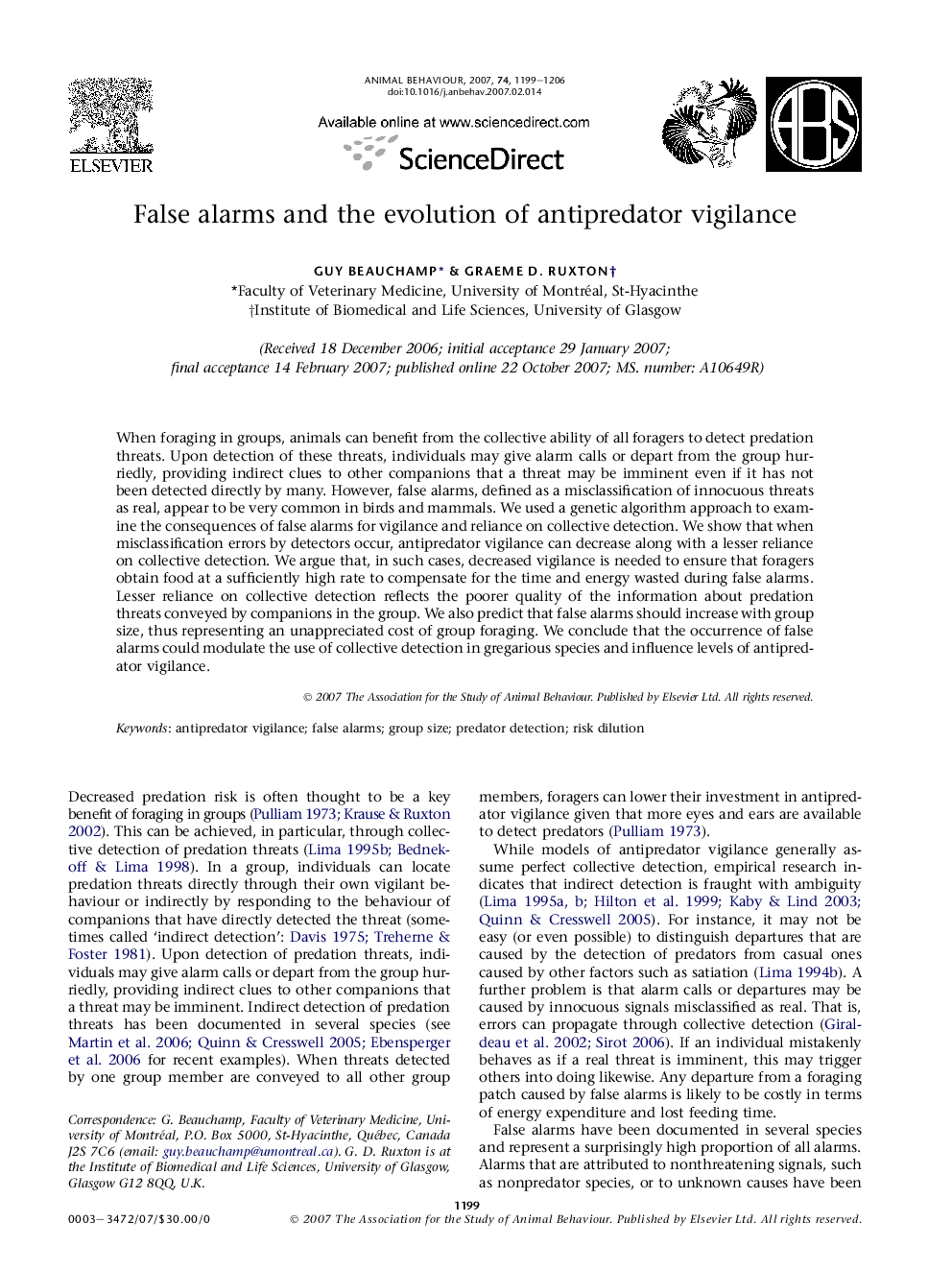| کد مقاله | کد نشریه | سال انتشار | مقاله انگلیسی | نسخه تمام متن |
|---|---|---|---|---|
| 2418274 | 1104342 | 2007 | 8 صفحه PDF | دانلود رایگان |

When foraging in groups, animals can benefit from the collective ability of all foragers to detect predation threats. Upon detection of these threats, individuals may give alarm calls or depart from the group hurriedly, providing indirect clues to other companions that a threat may be imminent even if it has not been detected directly by many. However, false alarms, defined as a misclassification of innocuous threats as real, appear to be very common in birds and mammals. We used a genetic algorithm approach to examine the consequences of false alarms for vigilance and reliance on collective detection. We show that when misclassification errors by detectors occur, antipredator vigilance can decrease along with a lesser reliance on collective detection. We argue that, in such cases, decreased vigilance is needed to ensure that foragers obtain food at a sufficiently high rate to compensate for the time and energy wasted during false alarms. Lesser reliance on collective detection reflects the poorer quality of the information about predation threats conveyed by companions in the group. We also predict that false alarms should increase with group size, thus representing an unappreciated cost of group foraging. We conclude that the occurrence of false alarms could modulate the use of collective detection in gregarious species and influence levels of antipredator vigilance.
Journal: Animal Behaviour - Volume 74, Issue 5, November 2007, Pages 1199–1206